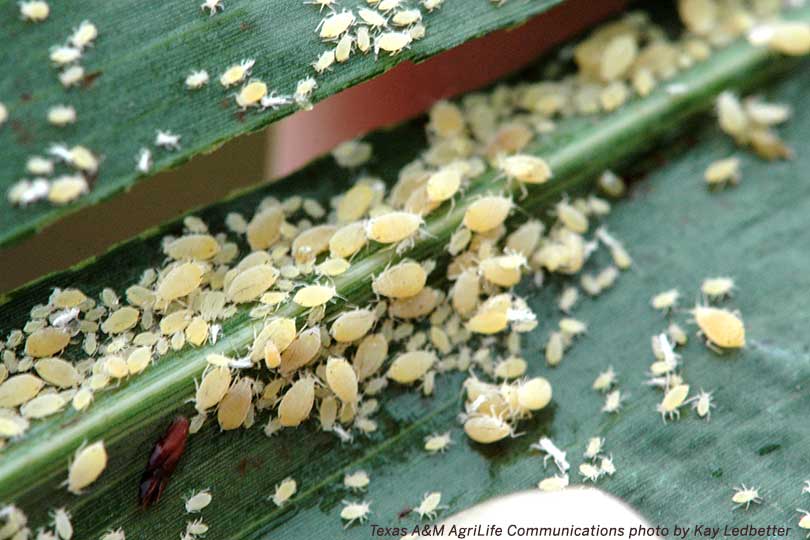Despite their preference for tropical weather, a small colony of sugarcane aphids spent their winter near Hale Center.
According to the Plainview Daily Herald, Blayne Reed, Texas A&M AgriLife Extension Integrated Pest Management agent for Hale, Swisher and Floyd counties, found both adults and nymphs in a predator-exclusion overwintering cage at a study site.
The aphids were found on several Johnson grass leaves inside the specialized cage. None were found on grass outside the cage, according to the paper.
The site is the furthest north the destructive sugarcane aphids have been found in Texas. Aphids do not normally survive colder temperatures like those found in the High Plains during the winter.
Reed says the news isn’t all bad. The small colony appears to have only contained adults and nymphs. No winged aphids were found.
Winged aphids begin appearing when sugarcane aphids are able to expand their distribution, according to the paper.
Sugarcane aphids feed on several sorghum-related plants. The prolific pests suck the sap out of the plant leaves and leave behind a sticky residue commonly referred to as “honeydew.”
The honeydew then remains on the plant, making it difficult for farmers to harvest sorghum crops without the sticky substance stalling machinery.
Aphids are tropical plants and are typically more active in warmer climates.
To help Texas farmers combat the pests, the Environmental Protection Agency (EPA) recently approved an emergency request to use Transform WG, or sulfoxaflor, by Dow AgroSciences LLC for one year.

